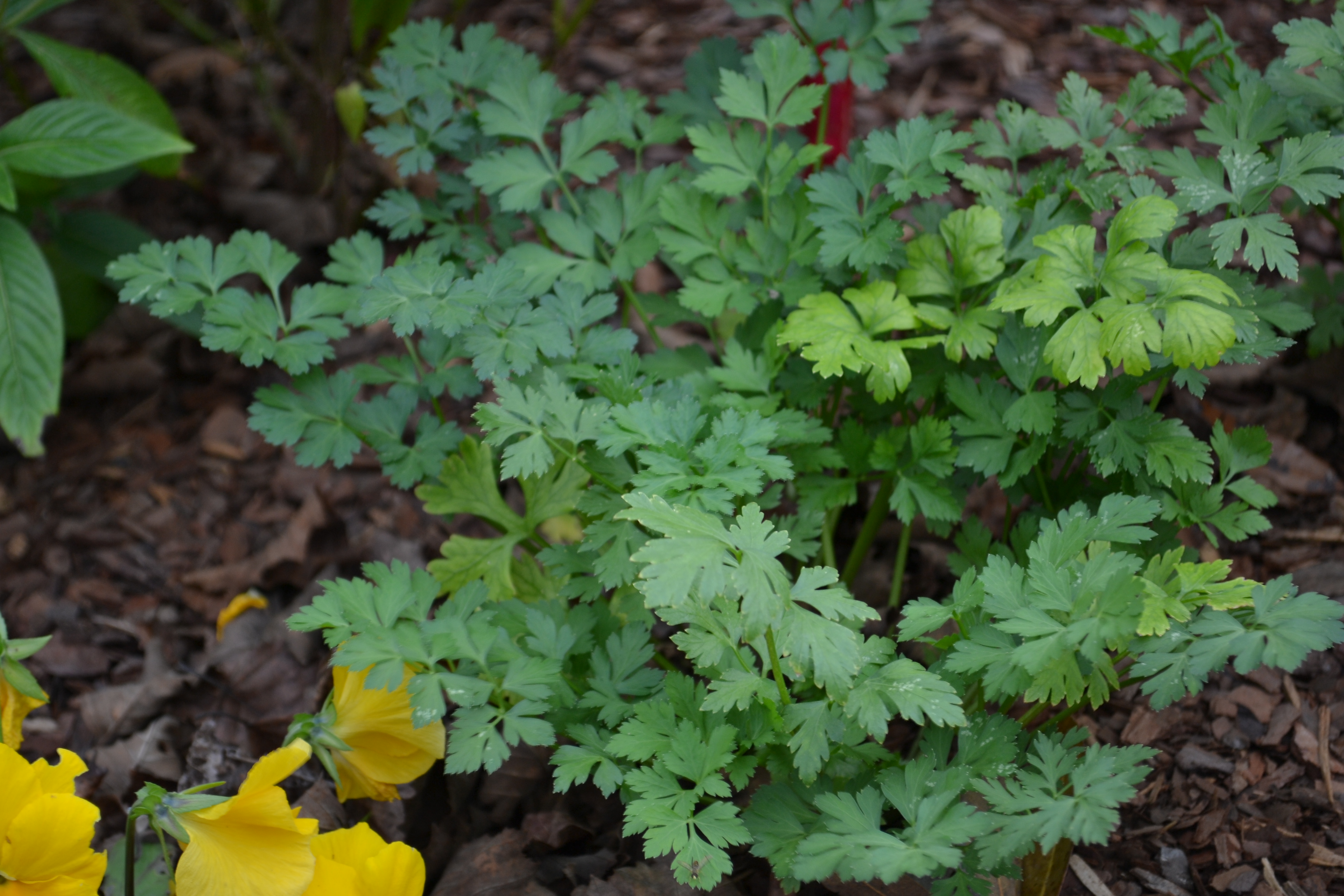
by Beth Bolles | Jan 27, 2016
Parsley is one of the most well-known herbs, and if you missed the fall planting, there is still time to choose a preferred selection for late winter/spring planting.
An herbaceous biennial, parsley is an easy herb for containers or small garden spaces. You may purchase a small pot at the nursery or grow from seed. Realize that seeds do best when soaked in warm water for 24 hours prior to planting and may not germinate for several weeks. Be sure to mark the area well so you remember not to overplant with another herb or vegetable.
Choose an area or soil that allows for good drainage and full sun in the cooler months. During the heat of summer, parsley does prefer a little break from afternoon sun. Consider planting in pots so plants can be moved during the hottest months. Plants will prefer water during times when rainfall is lacking, but the taproot does allow the plant to survive some drought.
There are different types of parsley you may choose but the most common types sold in stores are the curled leaf parsley and the Italian parsley. The Italian parsley has a stronger flavor and holds up a little better during cooking.
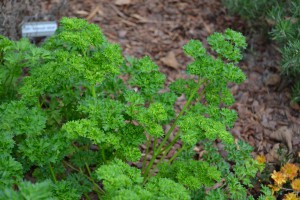
Curled leaf parsley
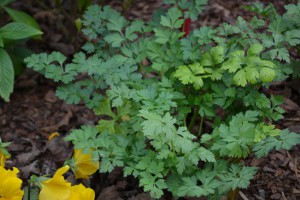
Italian parsley
Parsley is an attractive plant as a garden border or in a mixed container but will likely have a visitor during the warmer season that will feed on the leaves. The black swallowtail butterfly will use parsley as a host plant so plant enough to share with the butterflies.
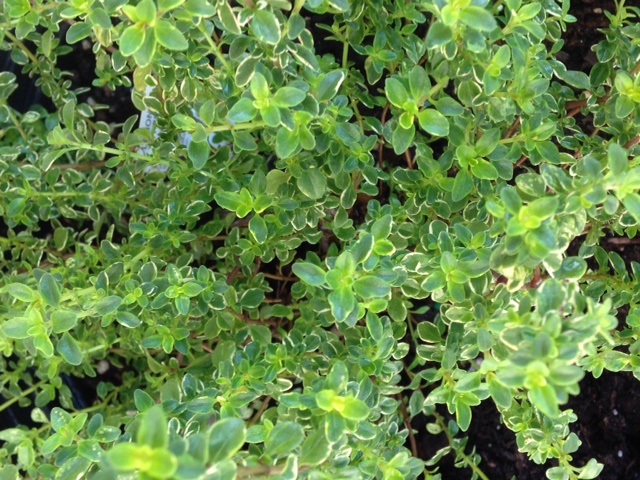
by Julie McConnell | Oct 27, 2015
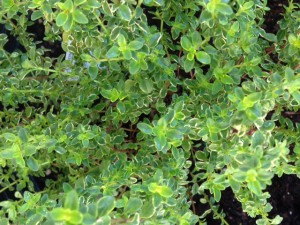
Variegated lemon thyme. Photo: JMcConnell, UF/IFAS
If you have ever thought about gardening but feel too intimidated to give it a try, consider starting with a herb garden!
Culinary herbs are generally very easy to grow and very forgiving of the neglectful gardener. They have relatively few pest or disease problems and thrive in hot climates on poor soils. An added benefit of growing herbs is that some parts are edible and can really liven up a plain dish.
Just like with other plants, there are both annual and perennial herbs. Annuals only live for one season and will need to be replanted or allowed to go to seed for the next season’s plant. An example of an easy to grow herb with an annual life cycle is basil. Basil comes in many different flavors and can be purchased as a transplant (small plant) or grown from seed. It performs well in warm weather and will be killed by a hard frost. Basil grows well in part to full sun and when it flowers it is attractive to bees and other pollinators. If you allow it to go to seed, you will have more plants throughout the growing season and more the following year.
Some perennial herbs that are easy to grow are rosemary, thyme, and mint. All of these plants can live for many years in the home garden. Rosemary and thyme like sunny spots but have very different growth habits. Rosemary will grow into a large woody shrub while thyme is low growing and hugs the ground. Both like full sun and good drainage. Another perennial herb that fits into shady sites with moist soil is mint. Mint has a vining habit and can either trail over the edges of pots or can form a dense mat in a flower bed. It will root wherever the stem touches the ground, so it is also easy to divide plants and share with friends.
To learn more about herbs read Herbs in the Florida Garden or attend our upcoming class “More Cooking With Herbs” where you will learn how to grow and cook with them! Class will be held on Saturday, November 14th from 9 a.m. – 12 noon. Pre-registration and payment of $10 is required no later than November 9th to attend the class. For more details or to register, call our office at 850-784-6105.
by Julie McConnell | Jul 1, 2013

Blueberries
Have you tasted the great local blueberries available this season? Want to start your own Blueberry garden? Now that Blueberry harvest is in full swing in the Florida Panhandle, it is a good time to discuss blueberry culture.
Blueberry plants in garden centers lure us in with bell shaped flowers or especially if already setting fruit. Before you take one home, make sure your site is suitable. Doing your homework before you plant is important, but especially so when you want to grow a plant with specific cultural requirements such as blueberries. Blueberries require well-drained acidic soil that contains organic matter, a minimum of 4-5 hours of sunlight daily, and space away from competing roots. Chill hour requirements and bloom time vary by blueberry types.
Soil in the Florida Panhandle has a wide pH range (measure of acidity) and can vary greatly even within a half-acre site. Having your soil tested prior to planting is critical to growing blueberries successfully because it is very difficult to lower pH if your soil is higher than the target range. Blueberries need acidic soil (pH 4.2-5.5) to be able to use micro-elements in the soil such as iron and zinc. As the pH increases, these nutrients become less available to the plant even if they are present in the soil in adequate quantities. Nutrient deficiency leads to weak plants and loss of vigor. Plan to test your soil before you purchase plants to ensure your site has the ideal pH range, visit your local UF/IFAS County Extension Office to obtain a soil test kit. For more details about how soil pH affects your landscape, please see EDIS SL256: Soil pH and the Home Landscape or Garden.
Sandy soils commonly found in North Florida tend to be low in organic matter. Incorporating soil amendments directly into planting beds or using mulches that decompose (such as pinestraw or wood mulch) will help increase organic matter in your landscape. Peat moss or pine bark can be incorporated into beds planned for blueberries or pine bark can be used as mulch. Adding organic matter will help retain soil moisture, which is beneficial to blueberries that have shallow root systems.
Retaining soil moisture is valuable to blueberries, however, the site does need to drain well to a minimum depth of 18 inches. Areas that remain wet for long periods of time increase the risk of Phytophthora root rot damage. If an otherwise ideal site does not drain well, consider building a raised bed or changing the location.
Four to five hours a day is the minimum sunlight needed for good blueberry production. Make sure your sunny site is at least 20 feet from building foundations and competing tree roots. Blueberry plants can get large, over ten feet in height and width! Plan to give them room to grow; with pruning they can be maintained around 7’x7’.
There are two main types of blueberries that grow well in Florida: the southern highbush and rabbiteye. Among those types, there are specific cultivars with low chill requirements that perform better in Florida than in other southern states. Rabbiteye blueberries are recommended for areas north of Ocala, southern highbush for central and south Florida. When choosing cultivars, you need to plant at least two different cultivars within the same type (rabbiteye with rabbiteye) and make sure that bloom time overlaps so that cross pollination can take place.
Rabbiteye cultivars recommended for the Panhandle are:
Early season
• ‘Beckyblue’
• ‘Bonita’
• ‘Climax’
Mid- to late-season
• ‘Brightwell’
• ‘Powderblue’
• ‘Tifblue’
• ‘Woodard’
• ‘Chaucer’
• ‘Bluegem’
For more information about blueberry site preparation, selection, pest management, and care please see EDIS CIR1192 Blueberry Gardener’s Guide.






